February 2017
Understanding site fidelity in our local harbor seal population
Raven Benko, undergraduate student
1 February 2017
New questions are always surfacing in our lab that our long-term monitoring project has the potential to answer. This lab has been monitoring harbor seal population numbers in the Log Pond along the Whatcom Waterway since 2007 and we have not notice significant changes in population numbers for the majority of that time – even in the presence of large scale construction events like dredging and building removal. It wasn’t until the log booms located in the log pond were removed in September 2017 and the seals lost their historical haul-out location that we started to notice a redistribution of seals in the area. Over the summer pupping season in 2016, we observed significant decreases in seal numbers in the pond as compared to previous years even though there were some log booms remaining in the pond (these booms were closer to the pier and had the potential for increased human interaction). Comparing these trends brings up several questions that we may be able to begin to answer with our data:
- Is the presence or absence of log booms in the pond the only factor contributing to stable harbor seal population numbers?
- Has our harbor seal population become habituated to large scale human disturbance in the form of construction activities?
- Are there other suitable haul-out habitats for harbor seals in the surrounding urban area?
- What characteristics make up an ideal haul-out habitat for our local population of harbor seals?
I have begun researching resiliency and habituation in harbor seals to help answer these questions and determine if situations analogous to our own have occurred and been documented previously. Conveniently enough, one of Dr. Acevedo-Gutierrez’s previous graduate students, Jennifer Olson, wrote her master’s thesis on “The effect of human exposure to the anti-predator response of harbor seals (Phoca vitulina)” which discusses the role of habituation in harbor seal behavior and survival. Olson monitored the response of harbor seals to bald eagle presence (a common harbor seal predator) at haul-out sites exposed to high, medium, and low levels of human disturbance (classified by boats per hour). She found that harbor seals at the low exposure sites reacted to the presence of bald eagles more frequently as compared to medium or high exposure sights indicating that human disturbance has the potential to influence harbor-seal predator aversion behavior.
The potential for habituation to various stimuli has been well recorded in harbor seals. It was found in a 2002 study that a group of harbor seals in the northeastern Pacific Ocean had become habituated to resident orca calls – as they pose no predatory threat – but demonstrated anti-predatory behaviors in response to transient and unfamiliar orca calls which have the potential to pose a threat (Deecke et al. 2002).
Another study published in 2002 looked into potential key habitat features including distance to a source of potential terrestrial predators, distances to food sources, peripheral water depth, and haul-out area in order to determine what habitat characteristics influence habitat use by harbor seals (Nordstrom 2002). Nordstrom found that distance from shore was significantly related to haul-out numbers and suggested that harbor seals seek isolated haul-out sites that are either further from shore or provide some other kind of geographic protection. Nordstrom also found that the presence of a terrestrial predator replica reduced haul-out numbers at the sites monitored.
Could it be that our harbor seals found the log pond secluded enough from potential threats to be a suitable haul-out, or have they simply become habituated to human interaction? Is their selection of the Log Pond related to its proximity to Whatcom Creek where there is abundance salmon? Because there are no natural predators of harbor seals in Bellingham Bay, proximity to a food source may be a key feature drawing harbor seals to the Log Pond as is the case with other seals in similar habitats (Pitcher and Mcallister 1981, Brown and Mate 1983, Suryan and Harvey 1998). If this is the case, why have we seen little evidence of relocation to nearby log booms that may provide similar habitat characteristics (see my January blog post for more details on predicted potential haul-out sites in Bellingham Bay).
In the coming months, I will continue to research this idea of site fidelity in our local harbor seal population in order to better understand the potential characteristics that define an ideal haul-out habitat for our seals. Until then.
References:
- Brown, R. F., and B. R. Mate. 1983. Abundance, movements and feeding habits of harbor seals, Phoca vitulina, at Netarts and Tillamook Bays, Oregon. Fishery Bulletin, U.S. 81: 291-301.
- Deecke, V. B., Slater, P. J. B., Ford, J. K. B. 2002. Selective habituation shapes acoustic predator recognition in harbour seals. Nature 420(6912): 171-173.
- Nordstrom, C. A. 2002. Haul-out selection by Pacific harbor seals (Phoca vitulina richardii): isolation and perceived predation risk. Marine Mammal Science 18(1): 194-205.
- Olson, J. K. 2013. The effect of human exposure on the anti-predatory response of harbor seals (Phoca vitulina). M. S. thesis, Department of Biology, Western Washington University, Bellingham, WA.
- Pitcher, K. W., and D. C. McAllister. 1981. Movement and haul-out behavior of radio-tagged harbour seals, Phoca vitulina. Canadian Field Naturalist 95: 292-297.
- Suryan, R. M., and J. T. Harvey. 1998. Tracking harbor seals (Phoca vitulina richardii) to determine dive behavior, foraging activity, and haul-out site use. Marine Mammal Science 14: 575-583.
Southern California marine mammal workshop
Rachel Wachtendonk, undergraduate student
1February 2017
This past weekend I traveled down to Newport Beach, California, to attend the annual Southern California Marine Mammal Workshop. As I recently applied to the Ph.D. program at the Scripps Institution of Oceanography, I wanted to take this opportunity to visit Scripps, meet faculty members, and learn about some of the marine mammal research in the area. It was a two-day conference covering a variety of talks and presentations. I flew into San Diego early Thursday morning and me up with a former Western student who is now a graduate student at Scripps. She showed me around the campus and was able to answer all of the questions I had regarding grad school at Scripps.
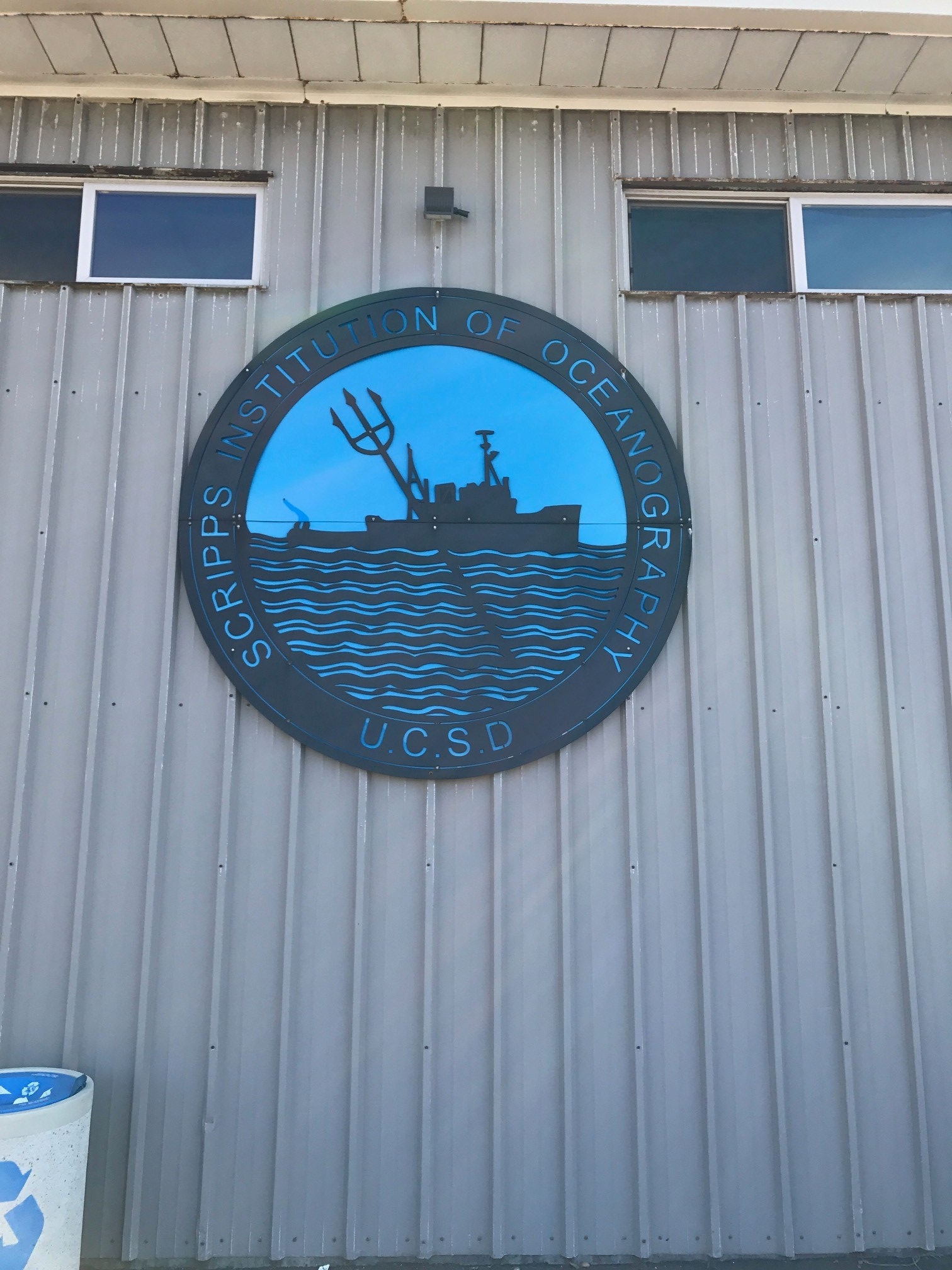
Scripps insignia (All photos: Rachel Wachtendonk.)
I was told there was a harbor seal haul out off a point at a beach called Children’s Pool. So I had to make a stop. Sure enough there were about 40 seals lounging on the beach in the late afternoon sun. Afterwards, I made the trek up to Newport Beach where the conference was being held.
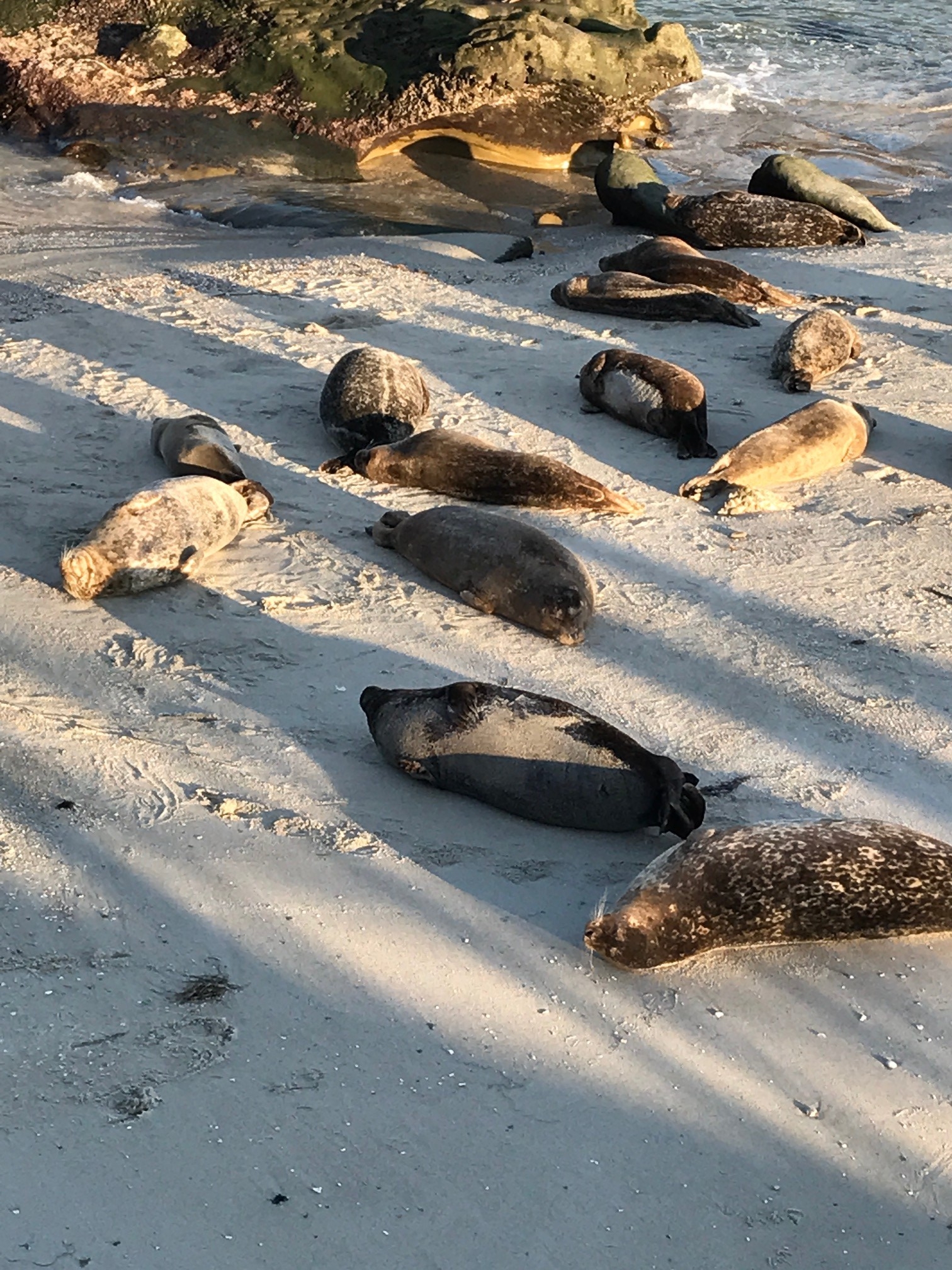
Day 1: Friday morning started with a segment on New Technologies for Marine Mammal Research. Iain Kerr, the CEO of Ocean Alliance, kicked off the presentations. His company has started using drones to collect data in a non-invasive and cost effective manner. It all started with SnotBot, a drone with petri dish attachments to collect snot from whale blows. He is starting to expand his drone arsenal to include EarBot (a hydrophone drone that does not need a boat to pull up close to the whales) and FLIRBot (a drone with a InfraRed camera to capture information on whales at night).
Shaili Johri, a post-doc from the University of Washington, was the next speaker. She talked about a newer method to analyze scat samples using the melting temperature of DNA to determine the species that the DNA belongs to. While her research revolved around a more landlocked animal, wolves in Eastern Washington, she brought it around how they will be using this technology to assess scat samples from killer whales. By assessing the micro-biomes of these whales, researchers will be able to monitor individual health, diet, and toxin levels.
Ted Cranford of San Diego State University had an interesting presentation on combining modern technology with traditional anatomic tools to understand the anatomy of cetacean skulls and the processes of hearing and echolocation. Using an industrial CT scanner he was able to create models of both mysticeti and odonticeti skulls from stranded animals. By learning more on how cetaceans hear his team was able to create simulations that show how a whale’s skull is impacted by sound. This will allow researchers to test how noise pollution, such as high frequency noise, will impact marine mammals without putting any live animals at risk.
John Hildebrand, a professor at Scripps, concluded the morning session. His talk centered on non-invasive ways to track marine mammal movements using acoustic arrays. This complex set-up of hydrophones allow him to track the 3-D movements of groups and individual marine mammals as they travel through areas of the California coast. This method is stress-free for the animals because they do not have to go through the tagging process and it also allows the movements to be tracked at night. Using these small aperture volumetric arrays he has been able to learn more about the movements and group dynamics of all type of cetaceans.
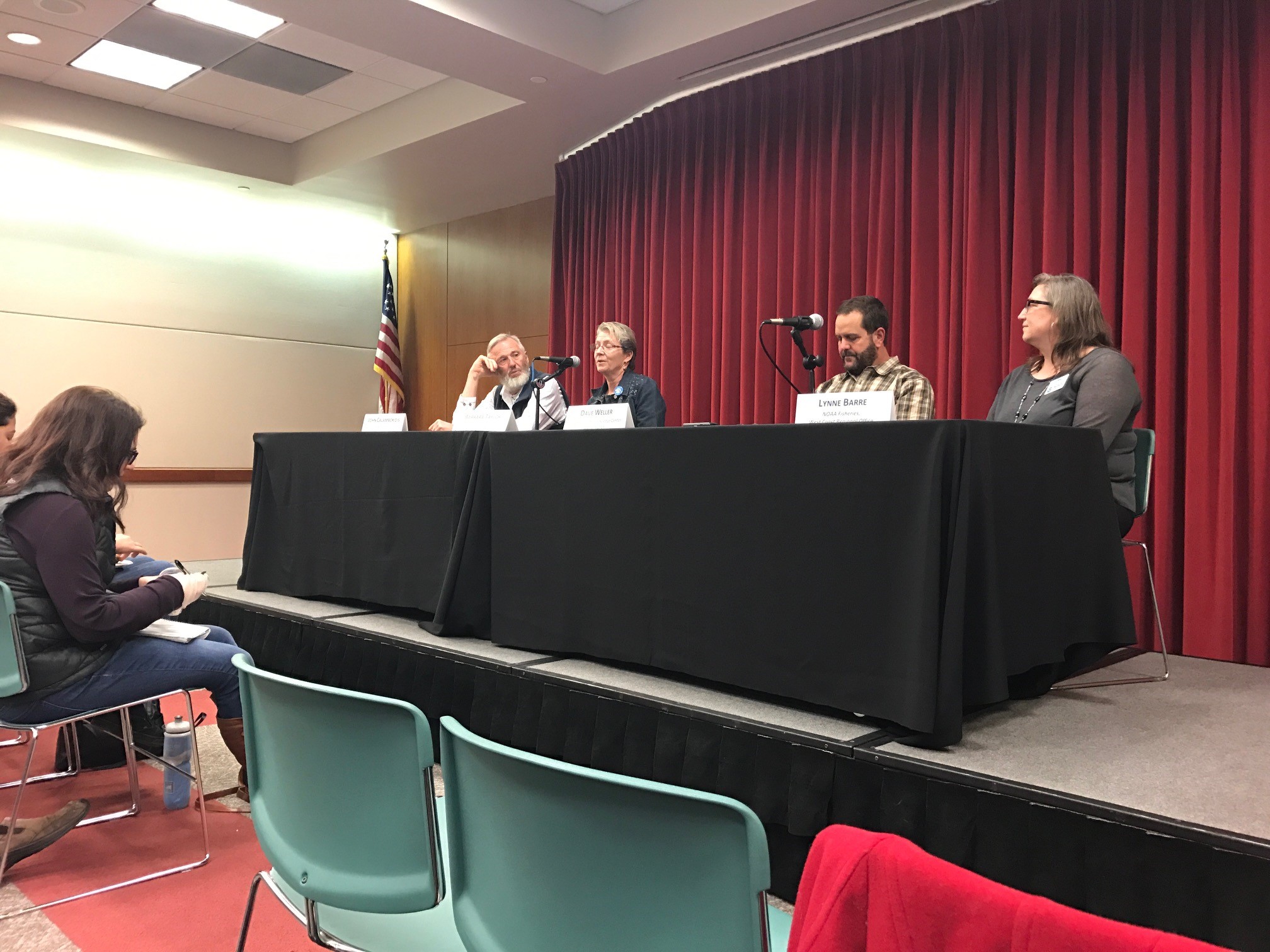
Panel following the conservation talks
The afternoon talks were on the topic of marine mammal medicine: current issues, ideas and research. The first speaker was Jody Westberg, the marine mammal stranding coordinator at Sea World. She talked about some of the old and new ways that they have been treating injuries in marine mammals. One method they use, especially on pinnipeds, is topical application of honey to wounds. Due to its antibacterial activity it is a way to keep wounds clean without pumping wild animals with drugs. They have combined this traditional treatment with “cold” lasers to increase tissue repair so animals can be released back into the wild sooner. They have also been experimenting with stem cells to treat marine mammals.
Lorraine Barbosa, a staff vet at the California Wildlife Center, talked about recent issues with California sea lions. Domoic acid affects the glutamate receptors in the brain and heart of the sea lions. This can lead to lesions in the heart, hippocampal necrosis and hippocampal atrophy. Domoic acid is soluble in water and therefore hard to diagnose because not all sea lions show typical symptoms, such as seizures. But now using echocardiograms she has been able to detect septal wall motion abnormalities in some of the sea lions with domoic acid poisoning, which will allow them to start the animals on the right treatment path sooner.
Claire Simeone from the Marine Mammal Center talked about general stranding patterns as well as new treatments to help cure corneal ulcers in pinnipeds. Southern California has seen two peaks in strandings in recent years, one in 2009 as a result of an El Niño and the other in 2015 from an unusual mortality event for California sea lions. In her work she has found that corneal ulcers are common in pinnipeds but have been relatively difficult to treat due to the invasive nature of having to apply antibiotics multiple times a day. She has started using poloxamer gels to hold the antibiotics at the site of administration and slowly release them over time. This means that the vets only need to put the animals through the stress of giving antibiotics on a weekly basis. She has seen 100% of superficial lesions healed using this method.
Also from the Marine Mammal Center was Tenaya Norris. She presented on another unusual mortality event (UME) that occurred in 2015 for Guadalupe fur seals. This species historically inhabited the entire west coast but now only consists of 20,000 individuals in California and Mexico. The UME saw a great decrease in post-weaned pups that died from starvation as well as seals that were dying of hypothermia due to the loss of guard hairs. There has also been an increase of entanglement related deaths (up to 25% some years). She is hoping that the UME will soon be over as this species is still threatened.
Day one of presentations ended with an update by Fernando Elorriaga-Verplancken, from Centro Interdisciplinario de Ciencias Marinas, also on the Guadalupe fur seal. Fernando has seen the recolonization of San Benito starting in 1997. This colony does not inhibit the island year-round but incudes juveniles and sub-adults whose numbers peak in July as well as mothers and their pups in February. From scat samples from this island as well as from breeding grounds on Guadalupe Island, he has also been able to determine the diet of these seals. The seals are also being monitored to determine the various causes of death during the different seasons.
After all of the presentations were finished, there was a poster and network session, which included the videos from tagged whales taken by John Calambokidis.
Day 2: The morning session was on conservation issues in marine mammal science. It started with Barb Taylor, a marine mammal geneticist at NOAA. She is on the team that is trying to save the critically endangered vaquita that inhabits the northern part of the Gulf of California. Using acoustic monitoring they have seen a 34% annual decline in the population despite the ban on gillnet fishing in the area. Her team is working on the removal of illegal gill nets in place to catch totoaba, an endangered fish that is endemic to the area. They are also starting to move forward in efforts to catch the vaquita to be placed in sanctuary until the gulf is once again safe. As of now they are unsure on the success on the ability to find, capture and house the vaquita.
Lynne Barre, a NOAA scientist, talked about the status of the endangered southern resident killer whales in the Puget Sound. Seventy-eight individuals make up the three pods that seem to still be in decline. They face many threats including prey availability, contaminants, vessel traffic, and noise. A recovery plan has been put in place that will take a broad approach to address all threats. Another large part of the conservation efforts comes in the form of education and outreach to get the general population informed about threats and involved in the conservation of these whales.
John Calambokidis, from Cascadia Research Collective, presented on the west coast humpback whales. The Pacific Ocean consists of eight breeding grounds and seven feeding stocks, which has made defining “populations” for means of conservation difficult. By using spatial distribution and mitochondrial DNA they have been able to identify 14 population segments. This allows for more localized and population specific conservation measures to be implemented.
Dave Weller, another NOAA scientist, finished up the morning session. His talk was on the conservation of baleen whales. The populations of these whales were severely reduced due to whaling. From 1990-1999, 3 million whales were killed, with the majority being in the southern hemisphere. Some subpopulations have been reduced to very low numbers. For example the eastern subpopulation of right whales hovers around 30 individuals. This leads to the dilemma of who to save? Do we prioritize species, populations, subpopulations, stocks, feeding aggregations, breeding aggregations?
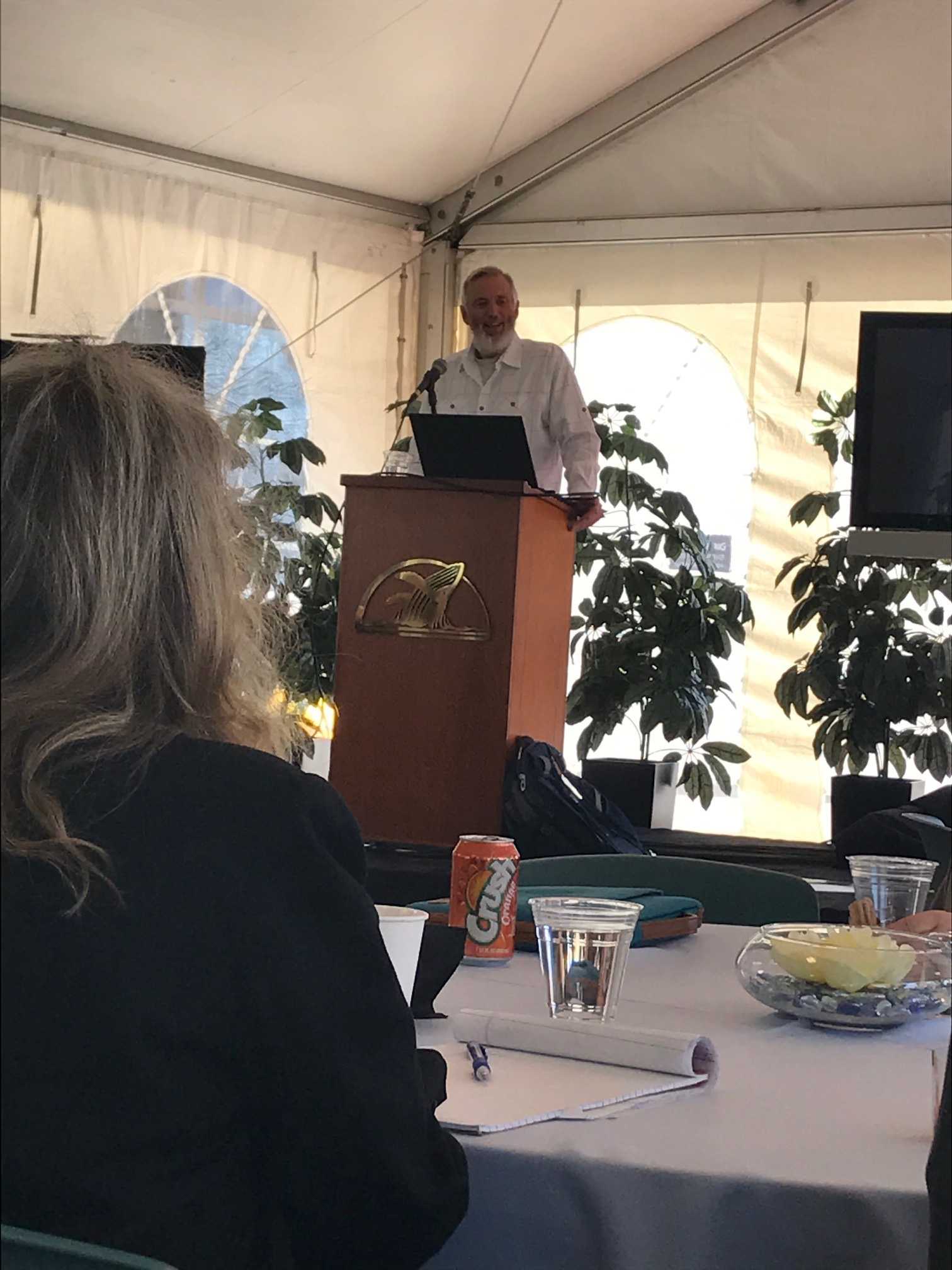
Keynote speaker John Calambokidis giving the lunch address.
The final session was on social media and communications hot topics. Alisa Schulman talked about using social media sites, like Facebook, to document and track cetacean sightings. This has been especially important for her gray whale census project. By having citizen scientists post on the Facebook page it makes it easier to track abundance, distribution, migratory timing, and behavior.
Ted Cheeseman was the next speaker and he talked about his social media platform, Happywhale. He believes that science benefits from citizen input which led to the creation of Happywhale. People submit images of whales that they have captured with time stamps and GPS coordinates to Happywhale and researchers match them to known whales from the Cascadia Research Collective database. Once the whale has been identified they respond with information about the whale you saw or tell you that you have found a new whale. This gets people more engaged in the science and conservation of whales. People will care more about a whale entanglement if they know Moon the whale is in trouble rather than just a random humpback whale.
Dave Bader from the Aquarium of the Pacific also talked about the vaquita and ways that social media can help with conservation. His talk centered around public engagement for conservation because extinction cannot go unnoticed. Through the American Zoo Association’s project SAFE (Saving Animals From Extinction) he is working to create partnerships and gain media coverage to bring the vaquita to light. This led to a Save the Vaquita Day and a hashtag #4aPorpoise to spread the word and keep track of conservation efforts.
The final presentation of the conference was by Susan Poulton of the Franklin Institute. Her talk was on digital strategies for science communication in outreach. With the lack of trust developing for online sources she stressed that the best way to break through bubbles was to start at the local level and to not overlook the importance of one-on-one communication. Working for social media outreach for Nautilus Live, she has found that scientists can be the story. She is credited for several clips going viral such as "Rare Sperm Whale Encounter with ROV". One of the reasons these clips become so popular is because they show the raw excitement of the scientists in the moment.
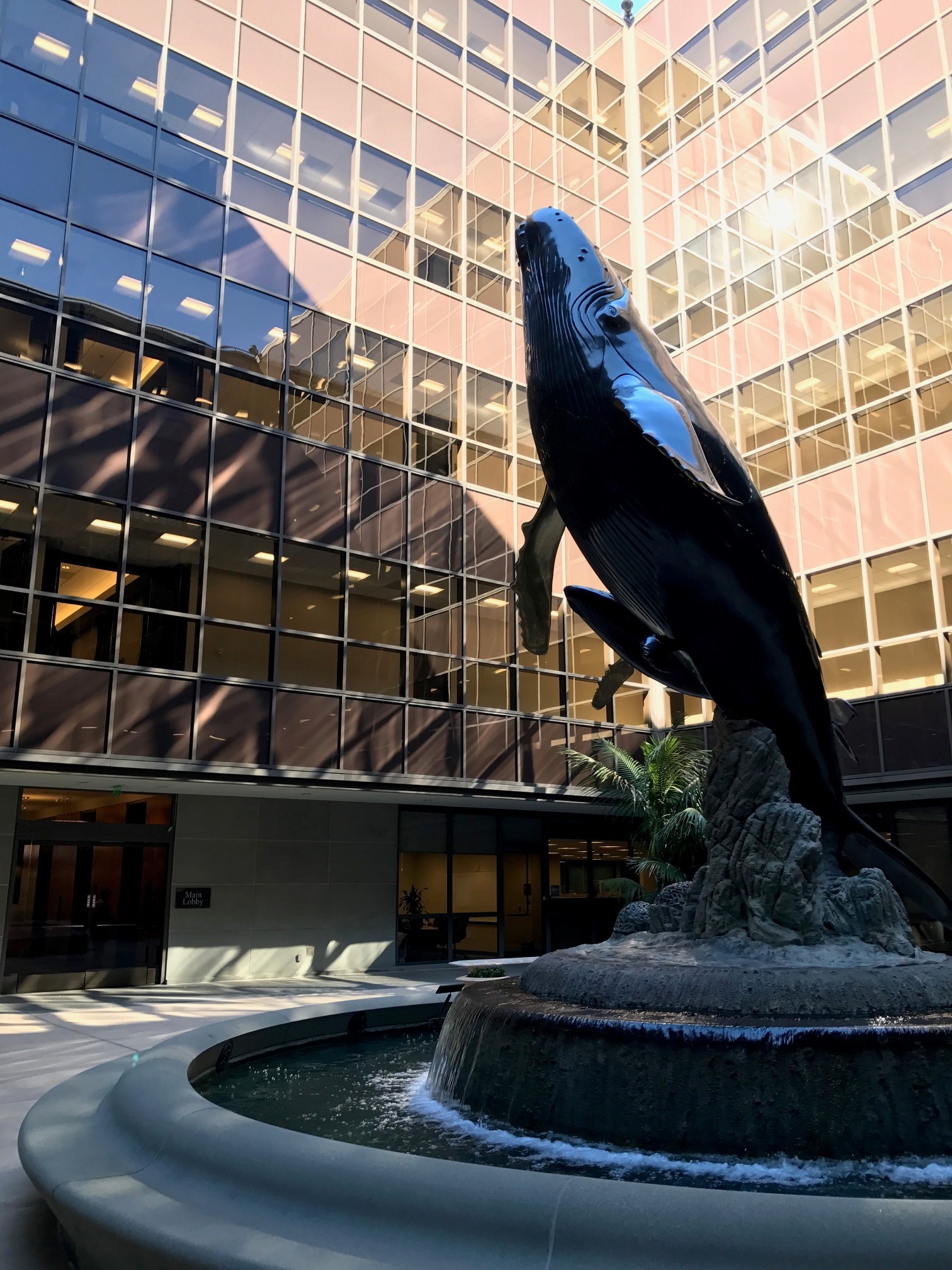
New year, new skills
Madelyn Voelker, graduate student
1 February 2017
This quarter I will be attempting to learn a number of new skills. Among these are cleaning and sorting of scat hard parts, DNA based sexing of scat samples, and DNA sequence data analysis tools. These skills will hopefully benefit my thesis and be marketable in the future.
Cleaning and sorting out hard parts from the scat samples is the next step in scat processing. I will be trained in this method by Washington Fish and Wildlife employees during the third week in February. So, I am hoping to have this step of processing in full swing by the end of next month. Brenna McClellan, who assisted in extracting the DNA matrix last quarter, will once again be assisting me with this step of the processing. This is going to be a BIG undertaking, so if anyone has the urge to help sort through seal poop, please let me know!
My first attempt at DNA based sexing scat samples will occur later this week. This will happen with the help of Dr. Dietmar Shawrz (my co-advisor), and an undergraduate in his lab (the talented Anna Marie Yanny). In addition to being a learning experience, these initial runs will determine if the reagents in the lab are still viable, and serve to get a better estimate on total time and cost.
I will take on the last skill I mentioned above (DNA sequence analysis tools) in my environmental genomics class. This is a seminar-style and project-based class. This gives each student the opportunity to tailor the class to focus on topics that are relevant to them. I will use this opportunity to further my skills in analyzing DNA sequences. I am attempting to do so by using the programs “R” and “Mothur” to take a bioinformatics approach to my class project. I have a whole lot to learn on this front, but thus far, the class has been a good experience. I would recommend taking it if you have the chance!
Hopefully I will be successful in gaining competence in all of the above. But whatever happens, it promises to be an eventful quarter!